Path Forward Strategic Plan
State Parks Launches Path Forward
5-Year Strategic Plan
February-2024
California State Parks developed a strategic plan, Path Forward, to help guide the department through the next five years. This plan was developed by a work group of over 100 State Parks employees with input from partners and stakeholders. An all employee survey to gather feedback on the plan closed on March 4, 2022.
The plan has been finalized and is ready for implementation.
*The translatable version of the strategic plan can be found in the drop-down sections below.
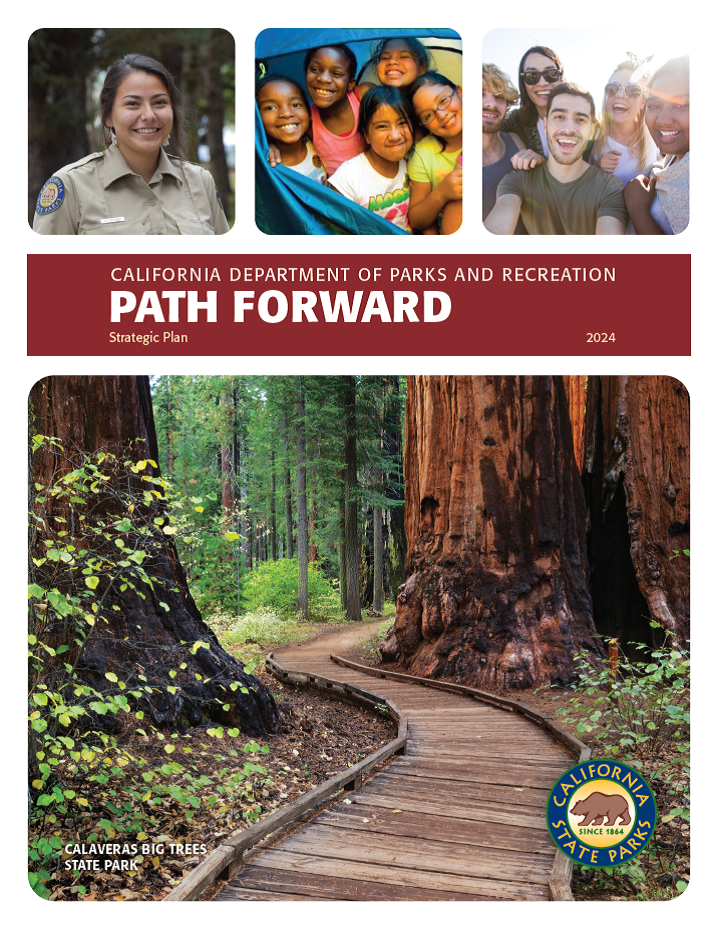 View Path Forward Strategic Plan
View Path Forward Strategic Plan
Be sure to check this webpage for updates on the strategic plan.

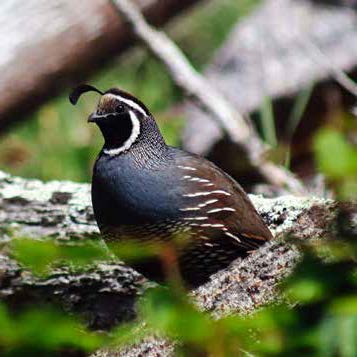 Two factors set Path Forward a part from previous change efforts. Department staff from all levels developed the plan with input from our partners rather than a top-down approach. The second factor begins early 2024 and involves an actionable implementation plan. The implementation plan will help us to stay on track with achieving the goals and objectives outlined in the strategic plan. The objectives for year one have been prioritized and progress will be posted to this webpage.
Two factors set Path Forward a part from previous change efforts. Department staff from all levels developed the plan with input from our partners rather than a top-down approach. The second factor begins early 2024 and involves an actionable implementation plan. The implementation plan will help us to stay on track with achieving the goals and objectives outlined in the strategic plan. The objectives for year one have been prioritized and progress will be posted to this webpage.
Why does DPR need a strategic plan?
The strategic plan, named Path Forward, will help State Parks stay on a path of continuous improvement, regardless of unforeseen circumstances. Path Forward will strengthen departmental operations by focusing on a set of yearly priority objectives and ensuring that all employees, supervisors, managers, partners and stakeholders are working together to achieve these objectives. Strengthening departmental operations will in turn positively impact public experiences in the California State Parks System statewide.
How was the plan developed?
Instead of the traditional top-down approach, Path Forward was developed internally through a co-creative process with departmental staff. State Parks received input from partners, stakeholders, and the public. The development process was also managed by a core team comprised of twelve individuals, and a work group of over 100 employees, supervisors, and managers who represent all field divisions, headquarters, and program areas across the department.
Path Forward consists of eight themes. Each theme has corresponding goals with specific objectives outlined to fulfill each goal. The vision, values, goals, and objectives were iteratively developed by the work group during five sessions in the spring and Fall of 2020. Input from these various stakeholders determined a logical structuring for the strategic plan.
In addition, a 21-member Partners and Stakeholders Advisory Committee was formed in the fall of 2020 to review work group draft documents and provide input to the strategic plan. Path Forward was also reviewed by DPR employees, partners, stakeholders, commissions, and DPR’s executive staff during various stages of development. This effort was launched just prior to the pandemic and many development approaches and timeline adjustments were made to maintain progress.

The plan consists of 8 themes. Each theme has goals with specific objectives to fulfill the goal.
Is there a prioritization plan for the objectives or goals?
Yes, State Parks is prioritizing a set of goals and objectives for implementation in Year 1. State Parks’ leadership, the Path Forward Implementation Committee, and individual project teams will hold regular meetings to review the strategic plan, timelines, and other priorities, and continue to map out implementation plans for each consecutive year.
Are there metrics for the strategic plan? What is the timeline for reporting?
Metrics will be chosen by the project teams who will execute projects that address the specific goals and objectives in Path Forward once they are prioritized.
Metrics for Year 1 priorities will be included in the implementation strategy, which will be rolled out early 2024. Managers for projects that address the goals/objectives in the plan will report their progress on a regular cadence to the Path Forward Implementation Committee.
How does Path Forward incorporate the importance of partnerships, including those with non-profit organizations and concessionaires?
One of the fundamental principles – Collaboration - highlights our emphasis on teamwork and cooperation with our partners and other key stakeholders, both internal and external to the department. Through strong communication channels and collaborative decision-making processes, we embrace our statewide partnerships that support and align with our shared goals.
How is technology integrated into Path Forward?
Theme 6: Systems emphasizes technology as a core component of Path Forward through three key goals that are supported by multiple objectives. Examples of projects include developing a mobile application to aggregate critical experiences from the public to inform the future direction of State Parks as well as the incorporation of Enterprise GIS systemwide.
Will the strategic plan be amended based on the needs of different divisions?
Path Forward is broad enough to reflect the different needs and current realities of each division within the department. Any division can also integrate their own plan based on their particular needs. In addition, Path Forward is a living and flexible document over its five-year lifecycle.
How will the Department ensure accountability and track progress?
The implementation strategy will be finalized and rolled out early 2024. All components of Path Forward will be tracked and reported using a project management process and tools to measure progress towards our objectives.
Instead of the traditional top-down approach, Path Forward was developed from within the department by the staff, with input from partners, stakeholders and the public. The Path Forward development process was managed by a core team of twelve and a department work group of over 100 employees, supervisors and managers representing all field divisions, headquarters, and program areas. The vision, values, goals, objectives and metrics were developed by the work group during five sessions with several breakout sub-groups and exercises during the Spring and Fall of 2020.
An integral part of the strategic planning process was the engagement of partners and stakeholders through the Path Forward Partners and Stakeholders Advisory Committee. The committee consisted of 21 representatives of State Park partner and stakeholder organizations representing all departmental programs throughout California.
Responsibilities of the committee members included the following:
• Review and discuss workgroup documents during regularly scheduled meetings with the core team.
• Engage in discussions and exercises related to Path Forward components such as strategic themes, goals, objectives and performance metrics.
• Review and advise the project manager and core team on the final draft of the Path Forward plan.
Path Forward Strategic Plan
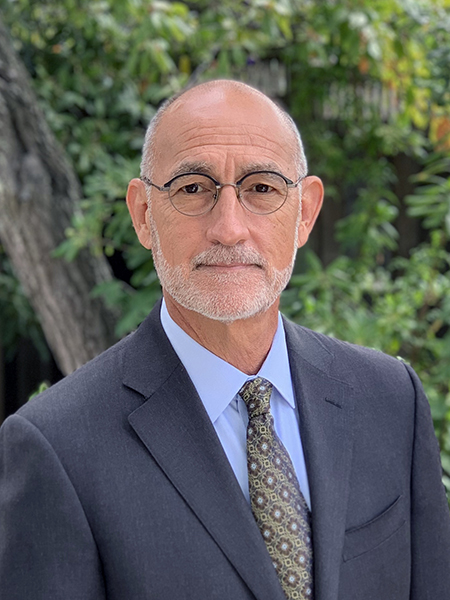 The California State Park System represents extraordinary examples of the state's diverse habitats and awe-inspiring parks, beaches, historical sites, cultural resources, and recreation areas. These state treasures and the recreational programs supported by the California Department of Parks and Recreation (DPR), as well as its divisions of Boating and Waterways and Off-Highway Motor Vehicle Recreation, and Office of Historic Preservation, contribute significantly to the health, well-being, education, and enjoyment of California’s diverse population and visitors worldwide. Path Forward is a five-year strategic plan for the DPR that represents a commitment to preparing the department for the century ahead to protect these important resources for current and future generations.
The California State Park System represents extraordinary examples of the state's diverse habitats and awe-inspiring parks, beaches, historical sites, cultural resources, and recreation areas. These state treasures and the recreational programs supported by the California Department of Parks and Recreation (DPR), as well as its divisions of Boating and Waterways and Off-Highway Motor Vehicle Recreation, and Office of Historic Preservation, contribute significantly to the health, well-being, education, and enjoyment of California’s diverse population and visitors worldwide. Path Forward is a five-year strategic plan for the DPR that represents a commitment to preparing the department for the century ahead to protect these important resources for current and future generations.
The themes, goals, and objectives in the plan are based on the foundational elements of access, inclusivity, and equity to provide optimal public service, further strengthen partnership development, and empower the department’s workforce. The plan also provides the department with more tools to respond to unprecedented and dynamic events.
We stand at a moment in history when we are experiencing the impacts of the COVID-19 pandemic and the effects of climate change, such as wildfires, drought, sea-level rise, and extreme weather events. Since 2020, we have seen record visitation to public outdoor spaces, and I believe that the conservation of these essential landscapes requires intelligent, sustainable, and resilient responses. The health and protection of these lands, waters, and natural and cultural resources are in everyone’s hands: parks professionals, the public, park partners, industry leaders, and political leaders. We must embrace and seek the best opportunities and look to science and expertise to tackle these challenges.
Ensuring California’s parks are for all Californians is another key priority for DPR and an important goal in the strategic plan. The potential of acquiring Dos Rios Ranch Preserve, located in the Central Valley, as California’s newest state park delivers on the promise of identifying new world-class landscapes close to park-poor communities. The department is excited about the potential of this acquisition and working with communities to help advance equitable access and build a healthier California.
The department is also committed to constantly examining, revealing, and celebrating the cultural and natural histories of parks and their diverse and relevant stories. As we steward California’s iconic treasures, the cultivation of understanding about the places, the people, and the recreational opportunities in parks is central to the future of parks for all.
Additionally, DPR is fostering an inclusive and effective work environment that incorporates intentional and diverse paths to leadership. I have witnessed an incredible amount of innovation from staff across the state. I want to ensure that all employees know that their contributions are valued and that they all have access to the right tools, training, and respect for getting our work done.
DPR’s Transformation implementation, which began in 2017, reflects a continual improvement toward the department’s public purpose. Path Forward aligns with Governor Gavin Newsom’s Equity Executive Order N-16-22, 30x30 and Outdoors for All initiatives and helps DPR strengthen operations to focus on key priorities and direct energy and resources toward meeting its goals and objectives for the next five years and beyond.
Staff and partners at DPR share a unique privilege in caring for and engaging the public in the future of these amazing natural and cultural resources. It is an honor to guide this department, and I am committed in whole heart and mind to serving you, the public outdoor and cultural spaces, and the people of California in this effort.
ARMANDO QUINTERO
Background
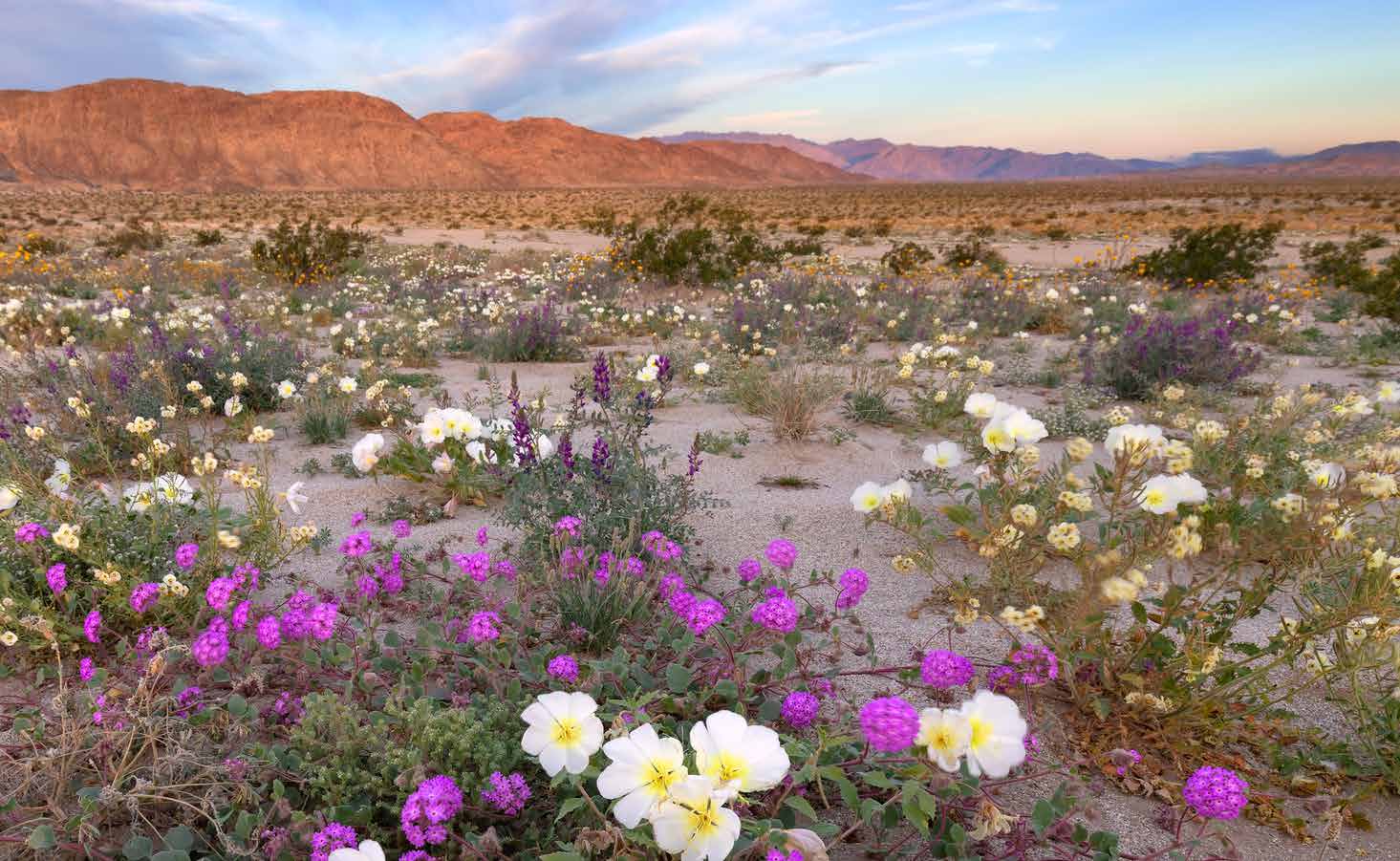 California’s State Park System is a world-class network of incomparable lands, waters, and features vitally crucial to the well-being of the state’s people, environment, and economy. DPR manages these precious natural and cultural resources while providing hundreds of programs and services for millions of Californians and visitors from all over the world.
California’s State Park System is a world-class network of incomparable lands, waters, and features vitally crucial to the well-being of the state’s people, environment, and economy. DPR manages these precious natural and cultural resources while providing hundreds of programs and services for millions of Californians and visitors from all over the world.
As population density and demands on parklands increase, DPR is committed to expanding community access to recreational opportunities across California through investments, program development, and new acquisitions. To navigate the rate of change in the environment, economy,
populations, technology, and public interests, DPR continues to reassess and adapt plans. DPR professionals are empowered to apply the best available knowledge and science to be sustainable, resilient, and focused on continual improvement into the future. These efforts help guide the
department in its role as California’s parks and recreation leader. Over time, DPR has engaged in comprehensive, positive change processes to strengthen the department, including the development of the 2001 Seventh Generation Visioning document, the 2012 Parks Forward Commission, and the most recent effort called Transformation from 2015-2017.
The Parks Forward process included nine Parks Forward Commission meetings and six workshops conducted throughout the state to gather public input from underserved and underrepresented communities on topics such as equity, diversity, inclusivity, partnerships, and creating a sustainable state parks system for future generations. This process led to the Transformation effort which identified and initiated several priority projects. This momentum of continuous improvement led to the start of the Path Forward strategic plan development which began spring 2020.
Path Forward, which aligns with Governor Gavin Newsom’s Equity Executive Order N-16-22, 30x30 and Outdoors for All initiatives, builds upon the existing priorities established through Transformation and introduces new ideas, goals, and objectives for the next five years and into the future.
Two factors set Path Forward apart from previous change efforts. Department staff from all levels developed the plan with input from our partners rather than a top-down approach. Public comment during the development of Path Forward was collected at eleven department commission meetings which also helped to inform the contents of this strategic plan. The second factor involves the creation of an actionable implementation plan, beginning in January 2024, that is led by a committee made up of key department leaders representing all program areas. The implementation plan will include interdisciplinary teams to carry out and manage projects tied to the goals and objectives of the plan. These teams will use a designated project management tool to develop specific plans, timelines, regular status updates and evaluation metrics to achieve each goal. The teams will provide annual progress and status updates.
Change is the only constant amid the impacts of funding, staffing levels, legislative mandates, climate change events, and human health considerations. This strategic plan is a framework designed to help the department make the best decisions as we focus on a healthy future for parks and people.
Path Forward is a guide for the department to strengthen operations, focus on key priorities, and direct our energy and resources to ensure that everyone— employees, managers, partners, stakeholders, and the public— works together to achieve these goals with agility and effectiveness.
MISSION, VISION, FUNDAMENTAL PRINCIPLES, AND CORE VALUES
The strategic plan is anchored by several foundational components that include:
DEPARTMENT OF PARKS AND RECREATION MISSION
DPR's longstanding mission continues to resonate today:
Provide for the health, inspiration, and education of the people of California by helping to preserve the state’s extraordinary biological diversity, protecting its most valued natural and cultural resources, and creating opportunities for high-quality outdoor recreation.
PATH FORWARD VISION
The Path Forward vision describes the ultimate desired outcome of the strategic plan:
As innovative stewards, DPR inspires a diverse public to engage with and sustain California’s natural and cultural resources while recreating, learning, and creating experiences that build lifelong memories.
FUNDAMENTAL PRINCIPLES
The department’s commitment to the fundamental principles of justice, equity, diversity, inclusion, collaboration, and access is reflective of the diversity of the parks and programs we manage and the publics we serve, with a focus on protecting and restoring the biodiversity in parks, illuminating and protecting the cultural history of the state, and engaging the public in fully connecting with the outdoors. As such, these fundamental principles have guided the development of the strategic plan and will continue to be instrumental during implementation:
JUSTICE
All physical, social, and cultural barriers are dismantled so that all individuals and communities experience the State Park System with fairness and equity.
EQUITY
The department recognizes that some people and communities have unequal starting points driven by different histories, historical treatment, circumstances, strengths, and needs. As such, the department promotes impartial and unbiased approaches to providing different resources, opportunities, and support based on the specific needs of individuals and groups.
DIVERSITY
The state’s unique demographics are recognized, respected, and embodied in the makeup of visitors, DPR’s workforce, and the experiences the department provides.
INCLUSION
DPR is an environment where all ideas and opinions are heard and accepted without minimization and judgment, making places for connection, celebration, input, ownership, leadership, mindfulness, and civic collaboration.
COLLABORATION
DPR nurtures an environment of teamwork, cooperation, and support among all staff, partners, stakeholders, and the public while working together toward shared goals.
ACCESS
All programs, facilities, and opportunities are inclusive of all people and address the societal and physical barriers that prevent user groups from enjoying California’s natural, cultural, and recreational resources.
CORE VALUES
Below are the enduring values that set the tone for behavior and cultural norms as DPR achieves the goals and objectives of the strategic plan.
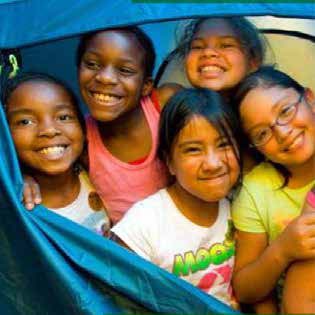 STEWARDSHIP
STEWARDSHIP
Manage, protect, restore, and balance the enjoyment and preservation of California’s resources through planning, innovation, education, investments, partnerships and stakeholder engagement.
INTEGRITY
Act with the highest ethical standards and transparency to earn and maintain the trust and respect of peers, partners, stakeholders and the public.
SAFETY
Promote the health and wellness of employees and the public by adhering to best practices, training, and education to achieve secure and positive environments for employees and park visitors.
ADAPTABILITY
Seize opportunities and quickly mitigate challenges through ongoing assessment, evaluation, and planning.
SUSTAINABILITY
Apply the best available environmental practices so that California’s resources remain healthy and vibrant for future generations to enjoy.
INNOVATION
Embrace, pilot, and implement the best ideas, technologies, and creative approaches in all that DPR does.
COMMUNICATION
Maintain open channels for sharing information that is timely, concise, and relevant while establishing a clear understanding of policies, procedures, and expectations to promote an inclusive and productive work environment.
ACCOUNTABILITY
Be responsible for punctual and productive outcomes in all endeavors.
STAKEHOLDER ROLES
Path Forward was developed with input from many stakeholders, providing a holistic approach to strategic plan development.
STRATEGIC PLAN WORKGROUP: The workgroup consisted of DPR employees who developed content for the strategic plan in sessions held through December 2020.
PARTNERS/STAKEHOLDERS ADVISORY COMMITTEE: This committee reviewed the strategic plan development progress and offered input at key points during the process.
EXECUTIVE STEERING COMMITTEE: This committee provided ongoing reviews and approvals during the strategic plan development.
STATE PARKS EMPLOYEES: All DPR employees had the opportunity to provide input on components of the strategic plan in winter 2022.
COMMISSIONS AND PARTNERS: Commissions and partner organizations had the opportunity to provide input on components of the strategic plan in winter 2022.
CORE TEAM: The core team guided and facilitated development of the strategic plan.
STRATEGIC PLAN STRUCTURE
Path Forward is comprised of the following components that outline DPR priorities.
DPR MISSION: Describes DPR’s purpose.
PATH FORWARD VISION: Illustrates the ideal future state of DPR.
FUNDAMENTAL PRINCIPLES: Guides the overall development of the strategic plan.
CORE VALUES: Represents enduring ideals and shared beliefs of DPR stakeholders.
STRATEGIC THEMES: Creates a framework to guide development of goals.
-
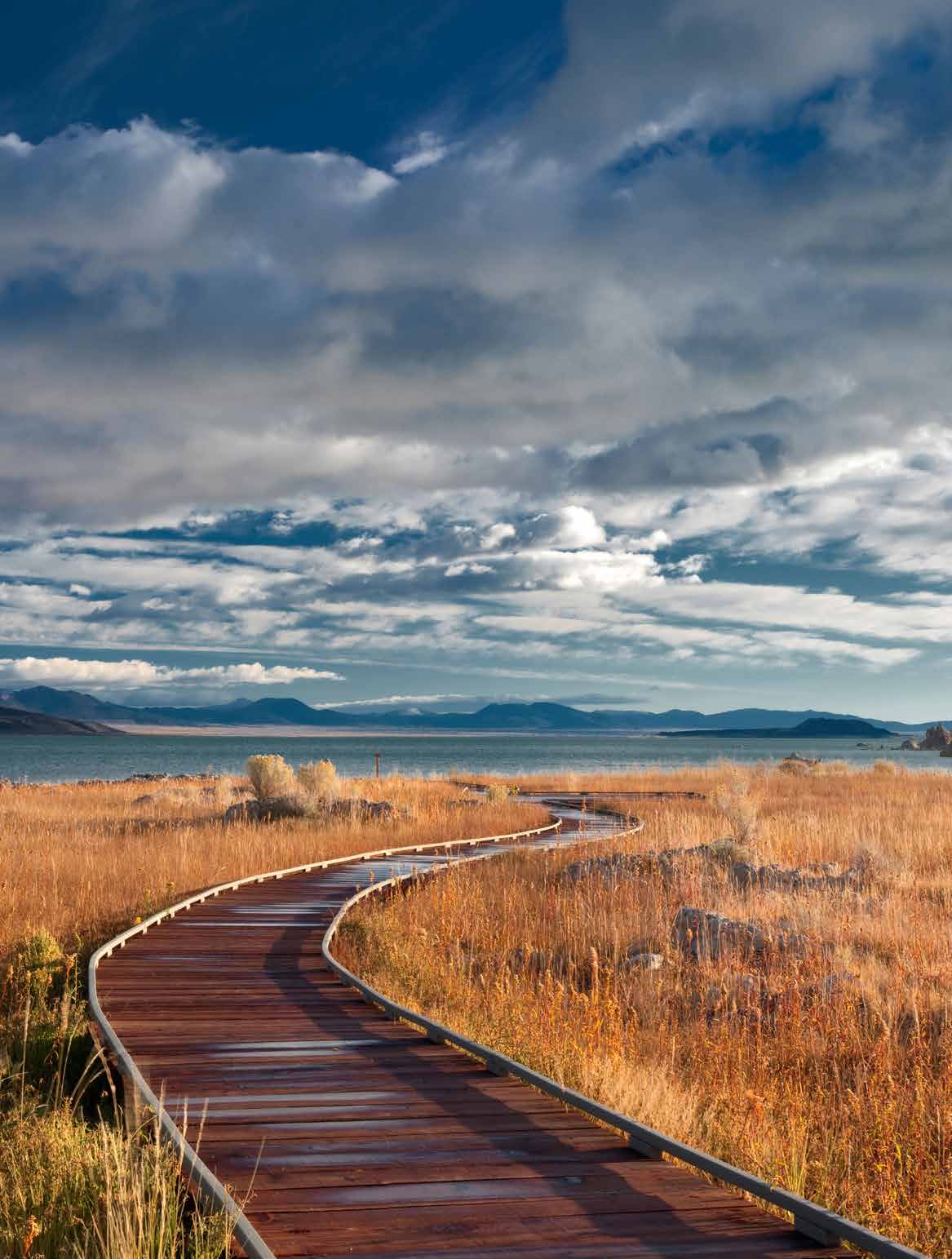 EMPLOYEE DEVELOPMENT
EMPLOYEE DEVELOPMENT
Invest in and prioritize the intentional hiring, development, promotion, safety, and involvement of employees to promote a diverse workforce and an equitable and inclusive workplace. -
NATURAL AND CULTURAL RESOURCES
Protect, preserve, and interpret natural and cultural resources. -
ORGANIZATIONAL CULTURE
Inspire a culture that is proactive, inclusive, and adapts to continuous change. -
EQUITY
Ensure equity and meaningful connections through partnerships, universal access, and relevancy for all people. -
OPERATIONS
Deliver the highest-quality operations that include premier recreational and educational programming. -
SYSTEMS
Maintain information management systems to keep pace into the 21st century. -
PUBLIC SAFETY
Provide professional and comprehensive public safety and protection. -
ADMINISTRATION
Achieve consistent and efficient administration functionality through improved communication, supportive management, and transparency.
GOALS AND OBJECTIVES: Key milestones and outcomes that can be measured and evaluated.
Invest in and prioritize the intentional hiring, development, promotion, safety, and involvement of employees to promote a diverse workforce and an equitable and inclusive workplace.
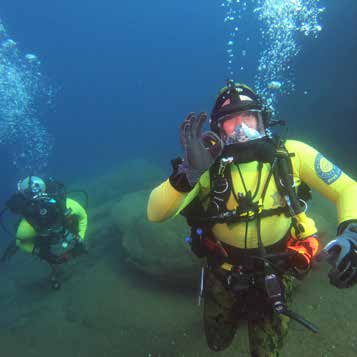 GOAL 1 - Conduct multifaceted, proactive recruitment and expedite hiring.
GOAL 1 - Conduct multifaceted, proactive recruitment and expedite hiring.
OBJECTIVES
- Simplify and expedite the hiring processes.
- Target recruitment efforts to expand diversity of department leadership, staff, and volunteers to reflect the demographics of California.
- Assemble hiring panels that are diverse, inclusive, and aware of unconscious bias.
GOAL 2 - Cultivate an organizational culture of safety, support and inclusivity.
OBJECTIVES
- Provide all disciplines and classifications with the necessary knowledge, tools, skills, abilities, and cultural competencies to deliver the full scope of services to professionally manage California’s State Parks and the recreational programs DPR manages in a continually changing world.
- Set, communicate, and meet occupational safety requirements and policies.
- Create an occupational safety program from within DPR's Park and Recreation Services Division.
- Implement a departmentwide employee wellness program.
GOAL 3 - Encourage job satisfaction and professional growth.
 OBJECTIVES
OBJECTIVES
- Establish and implement a standardized protocol for division and unit-level recognition programs.
- Develop and implement a training for advancement program.
- Develop and implement a comprehensive performance management system.
- Develop and implement a mentorship program.
- Create a professional development program for all employees.
GOAL 4 - Expand retention and incentive programs for seasonal employees.
OBJECTIVES
- Invest in seasonal employees by providing training, mentorship, and growth opportunities.
- Clearly define promotional and career pathways for seasonal employees.
Protect, preserve, and interpret natural and cultural resources.
GOAL 1 - Use innovative methods to better engage the public, younger generations, and underserved populations.
OBJECTIVES
- Utilize interns and students, partnerships with universities, and dedicated full-time staff to develop new, innovative programming strategies, while expanding on current successful programs.
- Institutionalize and maximize quantity and quality of Parks Online Resources for Teachers and Students (PORTS) Program and other digital learning capabilities.
- Complete implementation of online collections to reach broader audiences worldwide.
- Continue to develop and onboard digital content to the State Parks' mobile application: Virtual Adventurer: An Immersive Heritage Experience which allows storytelling from many perspectives.

GOAL 2 - Prioritize the fundamental elements for the preservation and restoration of natural and cultural resources.
OBJECTIVES
- Ensure necessary and sufficient in-house technical experts and outside consultant resources to conduct trainings and to meet DPR’s operational demand.
- Ensure preservation of historic properties by developing DPR’s Adaptive Use Program that identifies and properly rehabilitates department-owned historical properties while supporting department and public-serving needs.
- Train staff on natural disaster planning, emergency response protocols, and protection priorities for historic structures, sensitive natural resources, and cultural resources.
GOAL 3 - Strategically manage the department’s natural and cultural resources and facilities to adapt to the impacts of climate change.
OBJECTIVES
- Support landscape-scale sustainable restoration, protection, and stewardship efforts, such as the Redwoods Rising Project, the Crystal Cove State Park Landscape-Scale Stewardship Project and One Tam.
- Prioritize sustainable funding of planning and adaptive management strategies and projects.
- Develop and implement departmentwide climate change action strategies and action plans in collaboration with other agencies, entities, and partners.
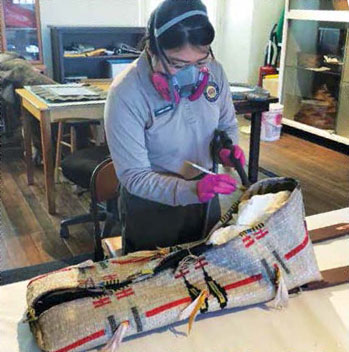
GOAL 4 - Prioritize the acquisition of strategic properties.
OBJECTIVES
- Acquire properties that reduce significant systemwide property gaps; facilitate adaptation to climate change; represent the diverse people, places, and events in California’s history; provide unmet recreational demands; and are strategically located for underserved populations.
- Collaborate with external land management agencies, nongovernmental organizations, Tribes, and communities to develop selection and prioritization criteria to inform the department’s process for proactively seeking opportunities and acquiring strategic properties.
- Maintain a prioritized list or dataset of potential systemwide acquisition properties that includes options for funding, operational considerations, priorities, and property inventories.
GOAL 5 - Expand and support the professionalization of the interpretation and education statewide program.
OBJECTIVES
- Evaluate and update the position management plan for interpretive positions across the system.
- Evaluate and update the effectiveness of all departmental interpretive training and required skills.
Inspire a culture that is proactive, inclusive, and adapts to continuous change.
GOAL 1 - Foster a culture of innovation, adaptability, and resiliency by empowering employees and stakeholders.
OBJECTIVES
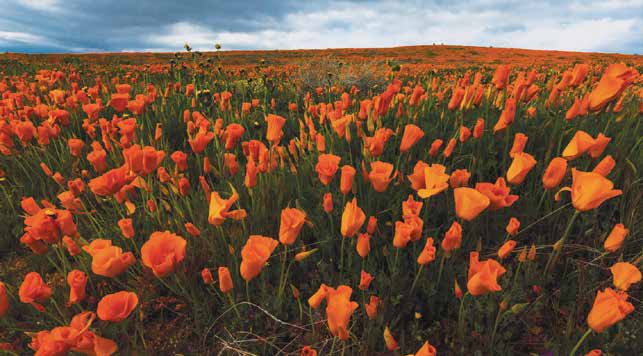 Create platforms where suggestions can be submitted for quarterly review and assessment by a committee with diverse perspectives and makeup, including a mixture of employees and stakeholders.
Create platforms where suggestions can be submitted for quarterly review and assessment by a committee with diverse perspectives and makeup, including a mixture of employees and stakeholders.- Develop “problem-solving labs” where DPR employees and external subject matter experts present on theme-based topics in an open forum to brainstorm ideas, issues, and solutions.
- Establish a change management process that facilitates smooth transitions and communication with employees and the public when implementing departmentwide changes.
GOAL 2 - Cultivate a supportive, innovative, and collaborative leadership environment.
OBJECTIVES
- Create more formalized opportunities for training and developmental assignments.
- Provide training in collaborative leadership and team building for all.
- Implement a leadership evaluation program, such as DPR’s Leadership 360, for all employees in leadership positions.
Ensure equity and meaningful connections through partnerships, universal access, and relevancy for all people.
GOAL 1 - Expand community engagement.
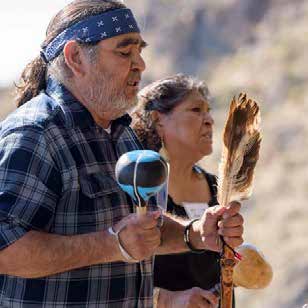 OBJECTIVES
OBJECTIVES
- Update DPR’s volunteer program policies and increase volunteer opportunities in program areas where appropriate.
- Establish a program lead for community engagement in all districts and program areas with a focus on underserved and underrepresented communities identified using resources such as the Statewide Parks Program Community FactFinder.
- Increase effective coordination with new and existing partners.
- Continue to improve and develop the existing community liaison programs at Los Angeles State Historic Park and Candlestick Point State Recreation Area and implement best practices to scale the program statewide.
GOAL 2 - Address community access needs.
OBJECTIVES
- Assess current programs to evaluate their success in reaching underserved communities and populations.
- Identify, develop, and prioritize new lower-cost cabin and alternative accommodation sites statewide.
- Provide and expand inclusive experiences and programs that are relevant and accessible for underrepresented communities and populations.
- Identify new sites to expand the partnership between DPR and Google Maps to provide Californians the opportunity to virtually visit state park units.
- Continue to implement the relevancy and history program at California Citrus State Historic Park and El Presidio de Santa Barbara State Historic Park, develop new pilot sites, and showcase the stories of underserved communities in park units.
- Create programs to support DPR’s Healthy Parks Initiative.
GOAL 3 - Strengthen existing relationships with Tribes, partners, concessionaires, and other stakeholders.
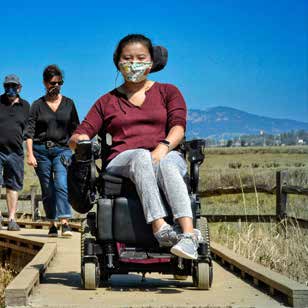 OBJECTIVES
OBJECTIVES
- Expand the Partnerships Division to provide additional support to tribal, landscape-scale, and university partnerships.
- Continue to improve working relationships between district staff and all partnerships, including external/local facility and utility districts.
- Improve support of district-level Tribal and partnership liaison programs through designation of staff and enhanced training.
GOAL 4 - Identify and engage with Tribes, partners, and stakeholders to support funding, scientific research, professional practices, and operational needs.
OBJECTIVES
- Establish a DPR in-house grants resource center to support the field and core programs to apply for external grant opportunities.
- Identify and promote internally and externally supported research that advances applied science for park management.
- Continue to collaborate with universities, nongovernmental organizations, and land management agency partners to test and replicate best practices throughout the state.
- Strengthen partnerships with California Native American Tribes to preserve Tribal cultural resources, increase interpretive programs using California Native American voices, and apply traditional ecological resource management practices.
- Work collaboratively with all of DPR's partners, including the new support entity, Parks California, the California public benefit corporation that supports DPR to identify potential partners and funding for priority projects and programs.
GOAL 5 - Embrace and encompass diversity across all aspects of the department.
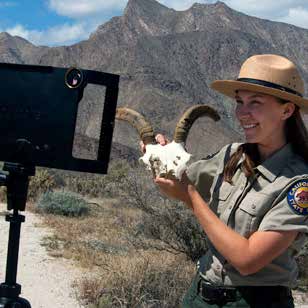 OBJECTIVES
OBJECTIVES
- Reevaluate interpretation of California’s cultural and natural resources to ensure an accurate and thorough portrayal of a diverse history as part of the Reexamining Our Past initiative with the California Natural Resources Agency and Governor’s Office.
- Increase availability of multi-lingual and ADA accessible communications, education, and written material.
- Assign and train a diversity outreach coordinator in each district to reduce barriers to inclusion, intentionally increase awareness, and expand outreach to underserved and underrepresented groups.
- Develop a departmentwide diversity, equity, and inclusion action plan for the current and future workforce.
GOAL 6 - Build and deploy a comprehensive and compelling communications and marketing strategy.
OBJECTIVES
- Conduct market research to understand and to better serve the public and identify potential partners.
- Optimize social media efforts and improve the DPR website to engage broader and more diverse audiences.
- Allocate resources necessary to enable the Communications and Marketing Division to optimize high-quality, professional-level, multi-lingual media and positive public relations.
Deliver the highest-quality operations that include premier recreational and educational programming.
GOAL 1 - Implement continuous improvement practices.
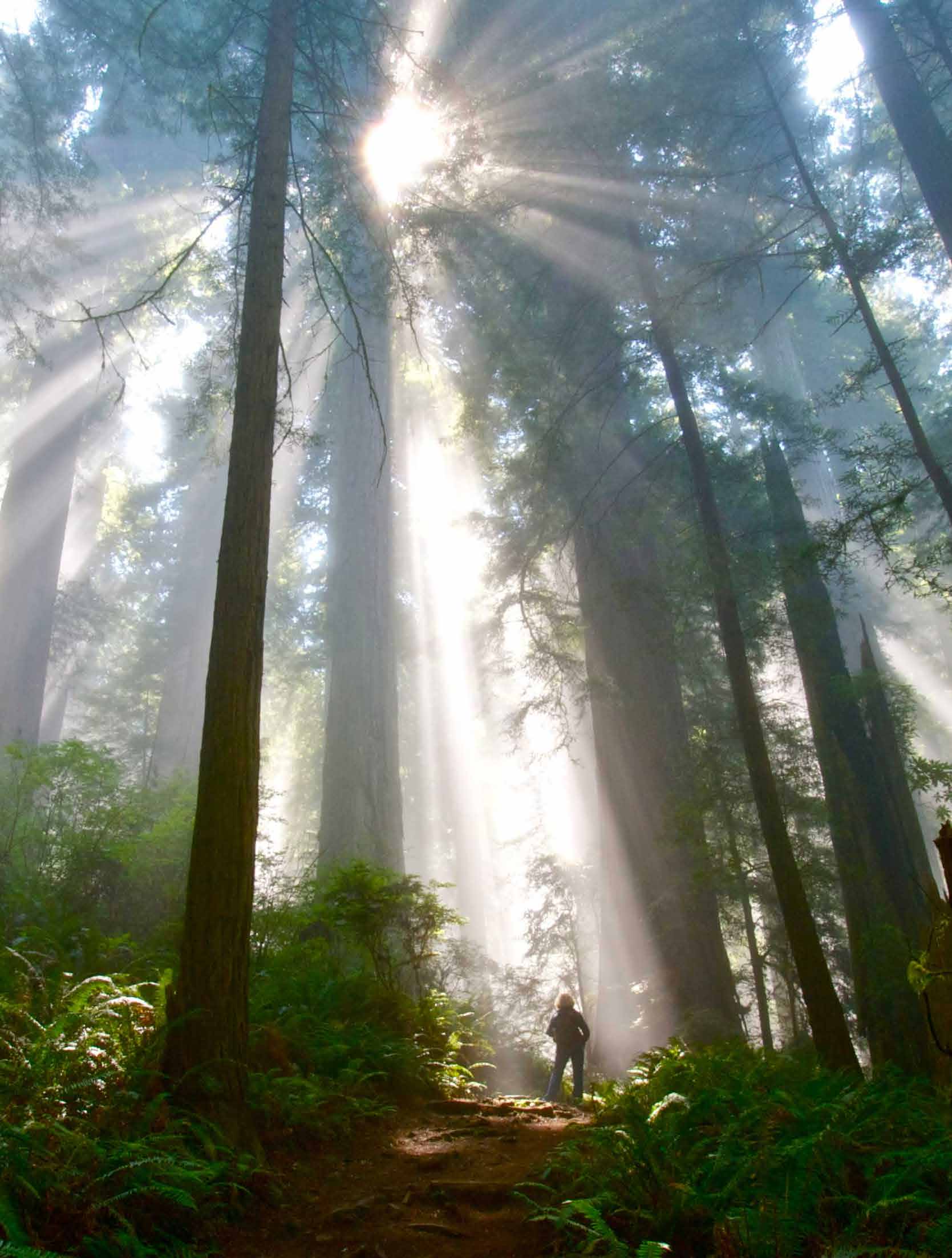 OBJECTIVES
OBJECTIVES
- Improve departmentwide planning efforts based on goals and guidelines identified in general plans and cornerstone documents.
- Improve inventory and monitoring to support systemwide natural and cultural resources management.
- Continuously assess, evaluate, and improve the department’s recreational programs and opportunities.
- Annually evaluate and assess the department’s organizational structure for effectiveness.
GOAL 2 - Empower DPR's professionals to manage locally to promote accountability and balanced, expeditious decision-making.
OBJECTIVES
- Develop and update policies that clearly set decision-making protocols for each operational level in the department.
- Clearly define all departmental roles and hold all employees accountable by required annual evaluations.
GOAL 3 - Provide a high standard of service, both internally and externally.
OBJECTIVES
- Prioritize deferred maintenance and capital improvements to provide well-maintained facilities and amenities with a focus on sustainability.
- Develop policy that evaluates all forms of recreation to balance recreational trends with resource and visitation management goals.
- Evaluate, integrate, and deliver necessary changes to DPR’s pass programs and fee structures to ensure access for all.
- Promote collaboration among interpretation leaders, resource specialists, subject matter experts, as well as Tribal and community representatives, to develop and deliver innovative, compelling, and diverse interpretive programs.
- Promote a customer service ethic that is equitable and inclusive, and extends courtesy, professionalism and responsiveness to the public and internally among staff.
Maintain information management systems to keep pace into the 21st century.

GOAL 1 - Create systemwide technology and digital asset management standards.
OBJECTIVES
- Develop standards, guidelines, policies, and educational outreach on data management practices.
- Initiate, manage, and maintain digital asset management technology and data.
- Create a process to effectively manage database, software, connectivity, and hardware needs, and upgrade systems that no longer function.
- Develop and maintain a systemwide geospatial information system (Enterprise GIS) program.
GOAL 2 - Identify and deploy the most effective technologies that enable efficient operations and enhance the visitor experience.
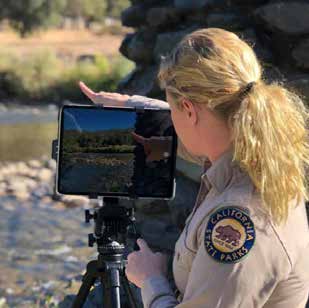 OBJECTIVES
OBJECTIVES
- Implement OuterSpatial CA State Parks Application for public use, with an internal employee portal that collects experience and feedback data.
- Use technology to deploy new and enhanced revenue collection.
- Implement the most effective technology for all aspects of park operations.
GOAL 3 - Develop excellent teleworking technology and support.
OBJECTIVES
- Continue to deliver home-based functionality that is fully supported by the Information Technology Division.
- Ensure all workstation management is efficient, equitable, and continually evaluated for improvement.
 Provide professional and comprehensive public safety and protection.
Provide professional and comprehensive public safety and protection.
GOAL 1 - Develop and enhance the department’s capabilities to optimize emergency response.
OBJECTIVES
- Streamline decision-making process to be more responsive to changing laws, mandates, community concerns, situational requirements, and emergencies.
- Ensure that state mandates for incident response training for all staff are met.
- Formalize statewide Incident Command System to support district-level incident command coordination.
GOAL 2 - Apply optimal approaches for public health, safety, and protection.
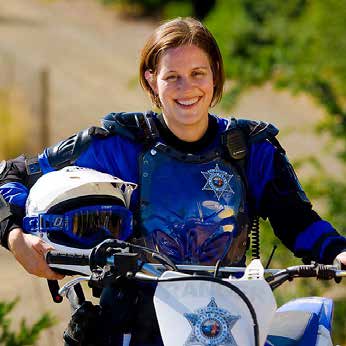 OBJECTIVES
OBJECTIVES
- Acquire and utilize law enforcement industry-standard equipment, technology, training and practices.
- Promote and practice community policing strategies throughout the department.
- Enhance public health measures to limit exposure and spread of illnesses and disease, for both the staff and the public.
- Conduct an assessment of law enforcement needs based on established parks’ public safety standards.
Achieve consistent and efficient administration functionality through improved communication, supportive management, and transparency.
GOAL 1 - Foster multidisciplinary program and project collaboration among all levels of the department.
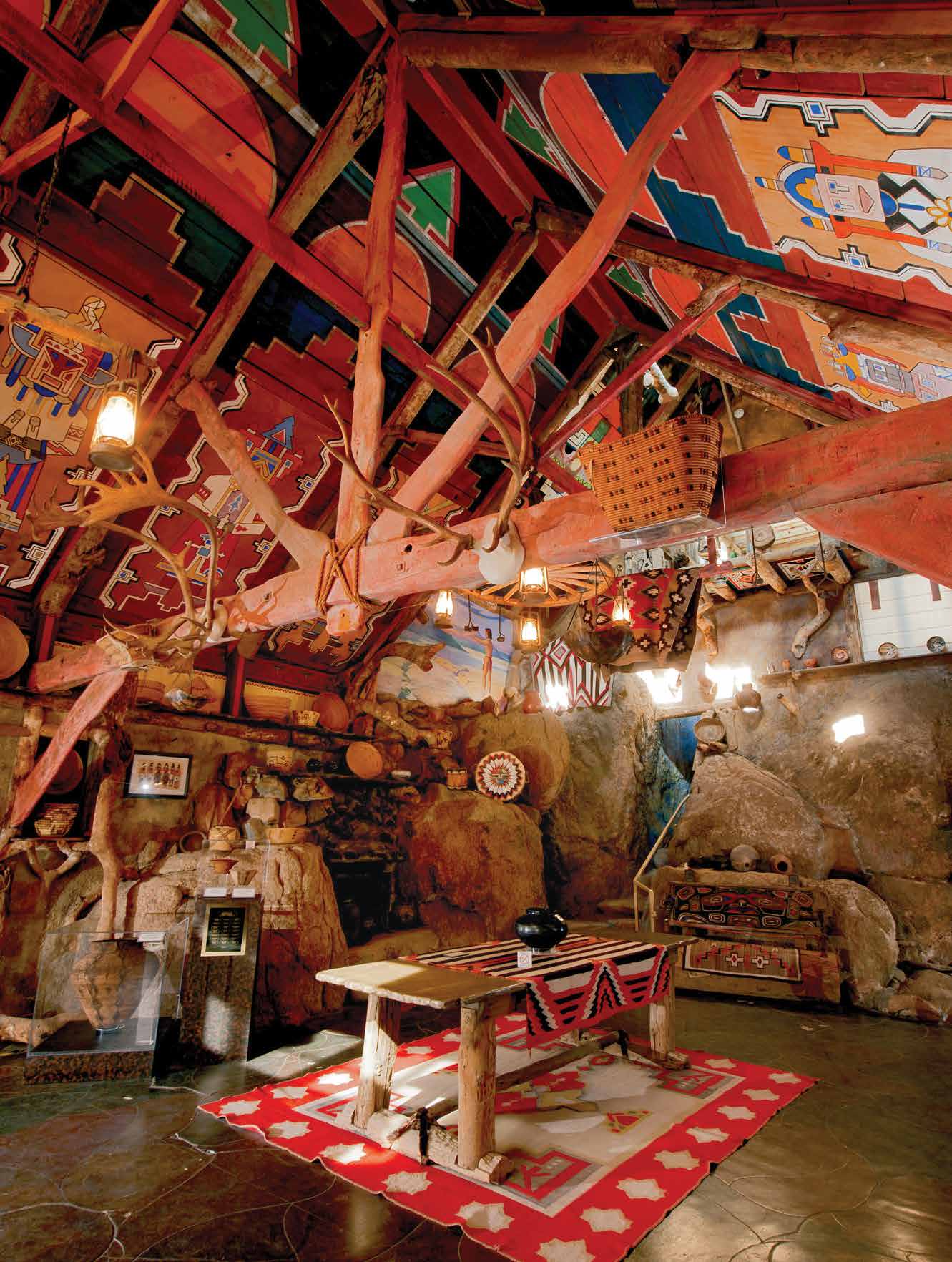 OBJECTIVES
OBJECTIVES
- Create and implement a standardized approach to share and communicate information across all levels within the department.
- Provide cross-training among program areas to give employees and volunteers a broad understanding of the processes and actions required to serve visitors, employees, grantees and protect resources.
- Develop and implement a departmentwide workforce and succession plan.
- Establish and implement a departmentwide standardized project management approach.
- Support and encourage multidisciplinary cross-division and district management in programs such as the Cannabis Watershed Protection Program and the Wildland Wildfire and Forest Resiliency Program.
GOAL 2 - Streamline the tools, processes, and resources for real-time accounting, budgets, and project and equipment management.
OBJECTIVES
- Document, catalog, publish, and communicate work processes across all core disciplines and districts.
- Implement software to improve timekeeping and staff scheduling.
- Develop and implement a system to share information about budgets, expenditures, and allocations for field programs and functions.
- Update and maintain the Service-based Budgeting tool for current and ongoing application.
- Establish workflows for efficient electronic document tracking, approval, and processes.

Path Forward serves as a road map to support DPR’s mission for the next five years. The priorities of DPR must adapt to technological and demographic changes to ensure that the organization provides a myriad of recreational opportunities for all, while still continuing to protect valued cultural and natural resources and promote a healthy California. By using this strategic plan as a guide, a course of action has been developed to support DPR in meeting challenges. The plan will also create new strategies for institutional growth and optimization.
Year -1 priority projects will be launched starting in 2024. The department has begun mapping projects that address the goals and objectives of Path Forward. The strategy for considering Year-1 projects consists of maintaining ongoing resourced projects and focusing on projects that:
• Are foundational to the success of Path Forward as a whole.
• Contribute to the success of other individual projects.
• Set the trajectory of the Path Forward fundamental principles.
The remaining projects will be incorporated into a road map developed by the Implementation Committee for the duration of the 5-Year Plan.
Thank you for your continued support of California’s State Park System and the recreational programs supported by DPR and its divisions of Boating and Waterways, Off-Highway Motor Vehicle Recreation, and Office of Historic Preservation.
For questions and comments, email strategic.planning@parks.ca.gov.
The foundational content of this plan was based on the extensive public engagement with various underserved and underrepresented communities during the Parks Forward and Transformation processes. Instead of the traditional top-down approach, Path Forward was developed from within the department by the staff, with input from partners, stakeholders, and the public. The Path Forward development process was managed by a core team and a department workgroup of frontline employees, supervisors, and managers. The strategic plan vision, values, goals, objectives, and metrics were developed during several sessions with breakout subgroups and exercises during the spring and fall of 2020.
A 21-member Partners/Stakeholders Advisory Committee was formed in the fall of 2020 to provide input and review workgroup draft documents. This final version reflects feedback received from DPR employees and commissioners through a survey and the Partners/Stakeholders Advisory group during a workshop in the spring of 2022. The DPR Executive Staff reviewed the workgroup process and draft documents at various stages of development and provided a final review and recommendation to the director.
 California State Parks Employee Workgroup
California State Parks Employee Workgroup
DESERT DIVISION: Angela Lorenzo, Brian Woodson, Danny McCamish, Jack Gorman, John DeLuca, Steven Ptomey, Terry Gerson, Todd Friedman, Wanda Freeman, Daniel Aceves, Dennis Stephen, Hayley Elsken, Joel Dupree, Kierstie Toohey, Kitty Gravett, Lydon (Lyn) Murray, Mark DeLong, Mylan McCloria, Peggy Roning, Roy Hannah, Samantha Birdsong, Silvia Farfan
COASTAL DIVISION: Barbara Tejeda, Bryan Etnyre, Desiree Goyette, Greg Kania, Jeff Findlay, Jeff Kennedy, Jerry West, Kimberly Weinstein, Richard Barry, Richard Fletcher, Angelica Maria Rios, Brian Hisel, Caitlin Meng, Chris Egan, Dave Grove, David Haigh, Erik Burgan, Gabby Herrera, John Murphy, Lana Nguyen, Leigh Patterson, Mark Riddlebarger, Matt Michael, Robert Cooper, Suzette Ward, Tiffany Stephens
CENTRAL DIVISION: Becky Corbet, Elizabeth Hammack, Juan Villarino, Lee Eal, Mark Hylkema, Matthew Allen, Mike Newby, Patrick Bauers, Paul Wissler, Ryen Goering, Tyler Dossen, Alex Tabone, Amber Stegner, Bella Kressman, David Hermitte, Ileana Maestas, Julia Hartman, Karen Walker, Lisa Bradford, Mark Sinclair, Nathan Aeschleman, Phaedra Nations, Tyler Knapp
NORTHERN DIVISION: Adam Shea, Dan Shaw, Greg Collins, Jason Hart, Kapua Kahumoku, Lauren Shoemaker, Mike Lair, Paul Perez, Terri Lopez, Tracy Weisberg, Trish Rice, Ashley Disney, Derek Shelly, Elizabeth McMillan, Emily Christian, Jennifer Pooley, Jerrie Beard, Kate Erickson Green, Michaela Hughes, Tamra Zaugg, Todd Barto
HEADQUARTERS AND SERVICE CENTERS: Paige Rogowski, Angela Calderaro, Brittani Orona, Dan Canfield, Denise Jaffke, Evan Walter, Heather Holm, Jared Zucker, Jeff Brown, Katrina Valerio, Kimber Combs, Lorraine Turner, Marcy Brown, Paul Furry, Xochi Prock, Alan Kilgore, Amanda Blosser, Antionette Steiner, Caroline Yoshimoto, Casey Caldwell, Denise Ross, Emily Yagi, Erin Frias, Jason Spann, Jeffrey Caudill, Jenn Grady, Jennifer Langer, Jerry Macias, Kathleen Turner, Kevin White, Kyle Bowlin, Lisa Fields, Nate Tucker, Rebecca Crowther, Sheri Rain, Traci Fortier
Partners/Stakeholders Advisory Committee
- Bonny Hawley, Friends of Santa Cruz State Parks
- Rachel Norton, California State Parks Foundation
- Kindley Walsh Lawlor, Parks California
- Sam Hodder, Save the Redwoods League
- Kate Wheeler, Crystal Cove Conservancy
- Heidi Doyle, Sierra State Parks Foundation
- Sara Barth, Sempervirens Fund
- Sharon Farrell, Golden Gate National Parks Conservancy
- Cheryl Marcell, California State Railroad Museum Foundation
- Andy Vought, Los Angeles River State Park Partners
- Amy Granat, California Off-Road Association
- Michele Luna, Stewards of the Coast and Redwoods
- George Davis, California African American Museum
- Cindy Heitzman, California Preservation Foundation
- Debbie Treadway, Native American Heritage Commission
- Bob Doyle, East Bay Regional Parks District
- Norma Garcia, Los Angeles County Parks and Recreation
- Jack Harrison, California Parks Hospitality Association
- Chuck Ross, Old Town San Diego State Historic Park
- Jeanette Kenworthy, Pfeiffer Big Sur State Park
- Paul Helman, California State Railroad Museum Docent
Core Team Members
- Steve Szalay
- Michaele DeBoer
- James Newland
- Alex Stehl
- Denise Peterson
- Will Schaafsma
- Steve McCormick
- Sonya Jones
- Kevin Matthews, Deloitte Consulting
- Sarah Wineland, Deloitte Consulting
- Marianna Jordan, Deloitte Consulting
In Memoriam: Karl Knapp 1956-2020
Serving as special advisor to the director, Karl Knapp was instrumental in developing and executing departmental Transformation reforms. Karl was the director’s representative to the Parks Forward Commission and a member of the Transformation Team and the Path Forward Core Team, and served as the deputy director of the Strategic Planning and Recreation Services Division. Karl’s 45-year career perfectly reflects the values contained in this Path Forward strategic plan. During his career, Karl mentored and encouraged countless parks employees to serve the department in leadership roles. We are proud to honor Karl’s legacy and lifelong commitment to California State Parks.
